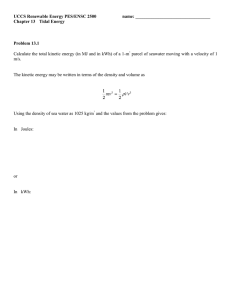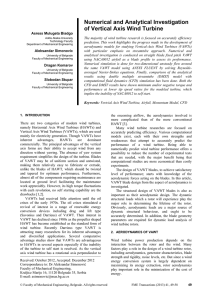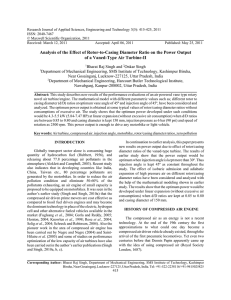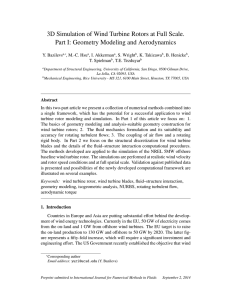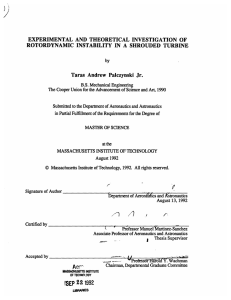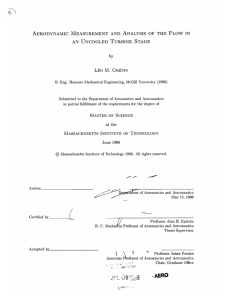Chapter 10 Wind Energy Problem 10.1
advertisement
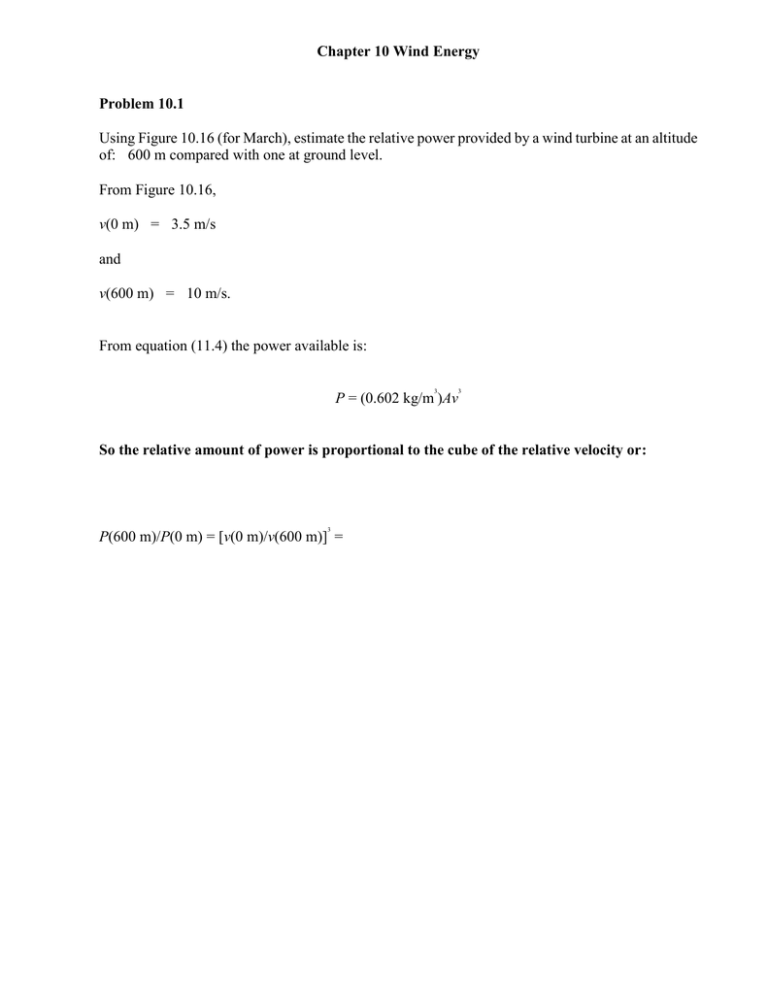
Chapter 10 Wind Energy Problem 10.1 Using Figure 10.16 (for March), estimate the relative power provided by a wind turbine at an altitude of: 600 m compared with one at ground level. From Figure 10.16, v(0 m) = 3.5 m/s and v(600 m) = 10 m/s. From equation (11.4) the power available is: 3 3 P = (0.602 kg/m )Av So the relative amount of power is proportional to the cube of the relative velocity or: 3 P(600 m)/P(0 m) = [v(0 m)/v(600 m)] = Problem 10.2 (a) Consider a wind farm consisting of 10-m diameter wind turbines with efficiencies of 40% on a grid given by the average spacing shown in Figure 10.18. 2 For a wind velocity of: 6 m/s, what is the power output in: kW per km ? 2 (a) The area per turbine is: πr = ________________________ per turbine. (b) The power per turbine (in Watts) from equation (10.4) will be P = _____________________________________ W From Figure 10.18 the average spacing of the wind turbines downwind will be: 10 times the rotor diameter or: 100 m and the crosswind spacing will be: 3 times the rotor diameter or: 30 m. 2 Thus each turbine will occupy a land area of: _____________________________m . 2 1 km square of land area will, therefore, accommodate _______________________________ turbines for a total output of _________________________________ MW Problem 10.3 A wind turbine with a 40-m diameter rotor produces: 287-kW output in a: 10-m/s wind. What is its efficiency? From equation (10.5) 3 3 P = (0.602 kg/m )ηAv Solving for η gives 2 2 For A = πr = _____________________________ m . At a wind velocity of: v = 10 m/s then we solve for: η as: Problem 10.4 A wind turbine with an efficiency of: 42% produces: 1-MW output at a wind velocity of: 13 m/s. What is the turbine rotor diameter? From equation (10.5) 3 3 P = (0.602 kg/m )ηAv or Solving for A gives 2 2 Then A = πr = πd /4. So Problem 10.5 Wind velocities are not constant throughout the day. The daily average power produced by a wind turbine is the power averaged over the wind velocity for the day. Calculate the average power for a turbine with a diameter of 20 m and an efficiency of 37% if, during a 24-hour period, the wind velocity is • 2 m/s for 4 hours. • 8 m/s for 16 hours. • 14 m/s for 3 hours. • 17 m/s for 1 hour. During each period the power will be given by equation (10.5) as 3 3 P = (0.602 kg/m )ηAv = where v is in m/s and P is in W. For the different periods the power available will be for 4 h at 2 m/s → ___________________________________ W for 16 h at 8 m/s → ___________________________________ W for 3 h at 14 m/s → ___________________________________ W for 1h at 17 m/s ___________________________________ W The energy generated during these periods is the power times the duration as for 4 h at 2 m/s → ___________________________________ kWh for 16h at 8 m/s ___________________________________kWh for 3 h at 14 m/s → ___________________________________kWh for 1h at 17 m/s → ___________________________________kWh Adding these gives the total energy over the 24 h period as E = ___________________________________ kWh The average power is, therefore, <P> = ___________________________________ kW Problem 10.7 2 A Darrieus rotor has an area of: 1500 m and operates with the optimal tip speed ratio. What is its power output in a wind with a velocity of: 20 m/s? From equation (10.5) the power is 3 3 P = (0.602 kg/m )ηAv A = ___________________________________m2 v = 20 m/s, estimating the efficiency of the Darrieus rotor from Figure 10.12 at about: 40% the above gives the power output as P = __________________________________________ MW



